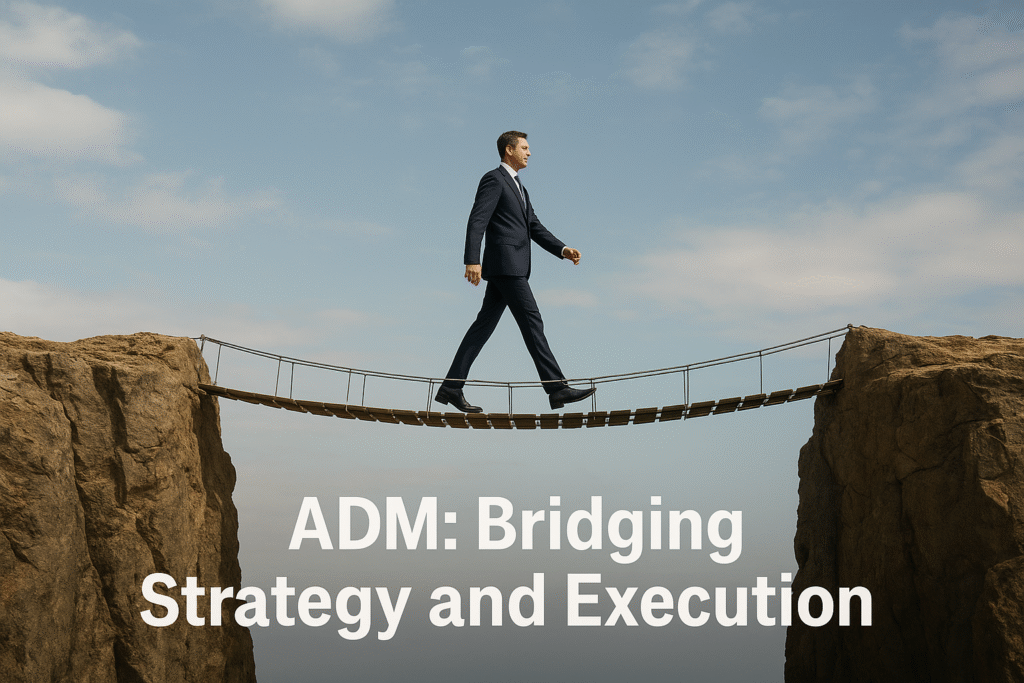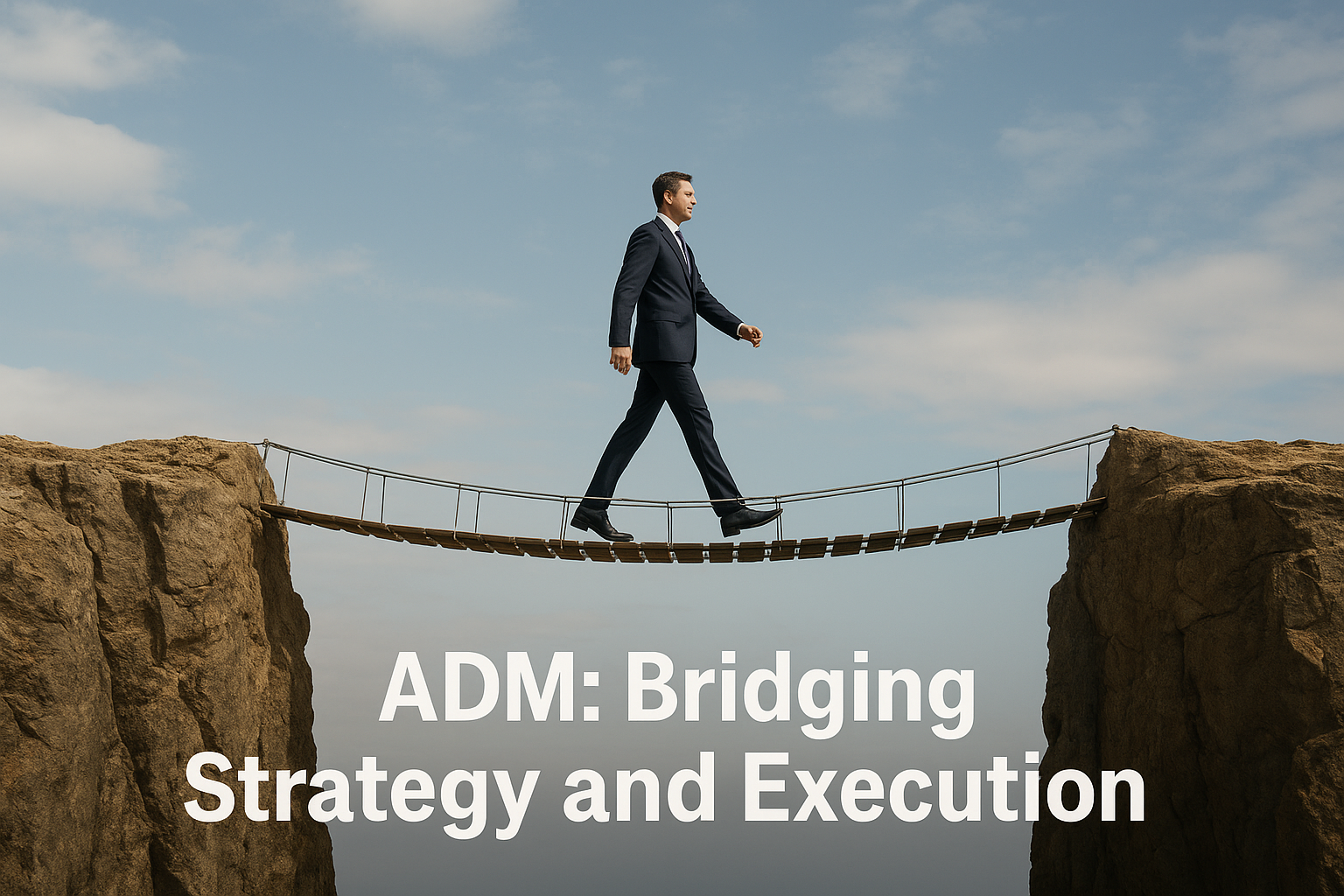The Operational Pivot
Assistant Deputy Ministers (ADMs) occupy a unique and challenging position within the federal public service. You are entrusted with translating Deputy and Ministerial intent into operational reality while navigating a culture that prizes caution and consensus.

Transformation in government is rarely straightforward. It requires more than technical expertise—it demands decisive action, cultural intelligence, and the courage to own outcomes. ADMs who remain in advisory mode risk slowing progress. Those who take ownership accelerate change and influence the culture of accountability throughout their branches.
The ADM Mandate: Strategic and Operational Responsibility
ADMs balance strategic imperatives with operational realities. You are expected to:
- Translate political directives into actionable plans.
- Align branch operations with broader departmental objectives.
- Ensure programs are delivered efficiently, ethically, and within budget.
- Maintain organizational cohesion while driving change initiatives.
The stakes are high. Research on public sector leadership highlights that mid-to-senior executives like ADMs play a pivotal role in ensuring alignment between strategy and operations, which directly impacts transformation outcomes (Bourgon, 2011; Aucoin, 2012).
The Cultural Challenge: Risk Aversion and Deferral
Federal public service culture prioritizes caution. For ADMs, this manifests in several ways:
- Over-reliance on committees and approval chains.
- Escalation of decisions to Deputy Ministers to avoid perceived blame.
- Hesitation to implement initiatives without unanimous consensus.
While caution has its place, excessive deferral creates paralysis. ADMs who default to advisory positions, waiting for higher approval at every step, inadvertently reinforce risk-averse behaviours among DGs and Directors.
One ADM described the challenge:
“When I constantly deferred decisions to my Deputy, I noticed my DGs stopped making choices. The message was clear: ownership is risky. I realized my hesitation was shaping the culture more than my words ever could.”
Operational Agility: Translating Strategy into Action
Operational agility is not optional—it is central to transformation. ADMs must navigate ambiguity, prioritize critical actions, and ensure that resources are aligned with strategic goals.
Research in organizational change highlights that agility at the mid-senior level enables faster program delivery, reduces bottlenecks, and empowers subordinates to make decisions aligned with organizational objectives (Denhardt & Denhardt, 2015; OECD, 2020).
To achieve this, ADMs must model ownership in their decision-making. This includes:
- Signing off on initiatives promptly.
- Addressing bottlenecks rather than delegating them upward.
- Communicating rationale clearly to both subordinates and superiors.
Cultural Intelligence: Reading Between the Lines
ADMs require cultural intelligence to operate effectively. This involves understanding not only formal structures but also informal norms:
- Why do DGs escalate some decisions but not others?
- When staff delay execution, is it technical or cultural caution?
- Which behaviours are rewarded or punished implicitly?
Cultural intelligence allows ADMs to intervene strategically. By recognizing patterns of avoidance or over-caution, ADMs can coach DGs, reallocate resources, or adjust timelines to maintain momentum while preserving accountability.
Independent Insight: Seeing Beyond the Branch
ADMs are embedded within the systems they must influence. This proximity can obscure organizational blind spots. External, independent insight provides a neutral lens to assess:
- Where process is being mistaken for progress.
- Where risk-aversion is hindering implementation.
- Where DGs or Directors need targeted guidance to act decisively.
Independent assessment equips ADMs with the confidence to act, ensuring that decisions are not only timely but culturally resonant, reinforcing the norms of accountability and ownership necessary for transformation.
The Cascade Effect: Leadership by Example
ADMs’ behaviour sets the tone for DGs and Directors. Every decision you make—every file you sign, every operational directive you issue—signals what is expected throughout the organization.
- Decisive action encourages DGs to take ownership.
- Clarity in decision-making enables Directors to act confidently.
- Visible accountability reinforces a culture where responsibility is expected and rewarded.
Conversely, hesitation cascades downward, reinforcing risk-aversion and eroding organizational confidence. The influence of ADMs is exponential: a single decisive act can catalyze systemic change.
Courage in Leadership: Beyond the Comfort Zone
Courage is a defining trait for ADMs in transformational contexts. It involves:
- Making decisions without perfect information.
- Implementing new initiatives even when cultural norms discourage deviation.
- Advocating for operational changes that align with strategic imperatives, despite anticipated pushback.
Leadership research confirms that courage at the mid-senior level empowers subordinates, accelerates implementation, and fosters innovation (Denhardt & Denhardt, 2015; Head, 2018). For ADMs, courage is both a strategic tool and a cultural lever.
Case Example: Transforming a Program Delivery Model
An ADM overseeing a departmental digital service initiative faced repeated delays due to DGs deferring key decisions. By intervening decisively—clarifying priorities, providing resources, and coaching DGs to own outcomes—the ADM restored momentum. Within six months, program delivery exceeded projected timelines, demonstrating how ADM ownership can reshape organizational behaviour and culture.
Conclusion: ADMs as Catalysts of Change
The ADM role is pivotal in bridging strategy and execution, culture and performance, advice and ownership. By exercising decisive leadership, modeling accountability, and leveraging cultural intelligence, ADMs shape the operational reality of the public service.
Transformation is not merely about policy or technology—it is about leadership behaviour. ADMs who embrace their mandate as cultural architects and operational decision-makers accelerate outcomes, empower subordinates, and drive meaningful change.
What’s Next?
Institute X provides independent insight to help ADMs translate strategy into action, foster accountability, and accelerate organizational transformation.
References
- Aucoin, P. (2012). Democratizing the Constitution: Reforming Responsible Government. Emond Montgomery.
- Bourgon, J. (2011). A New Synthesis of Public Administration: Serving in the 21st Century. McGill-Queen’s University Press.
- Denhardt, J. V., & Denhardt, R. B. (2015). The New Public Service: Serving, Not Steering. Routledge.
- Head, B. (2018). “Wicked Problems in Public Policy.” Public Policy and Administration, 33(3), 257–277.
- OECD (2020). Leadership for a High-Performing Civil Service. OECD Publishing.

